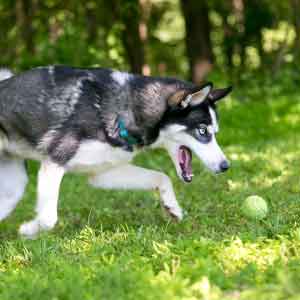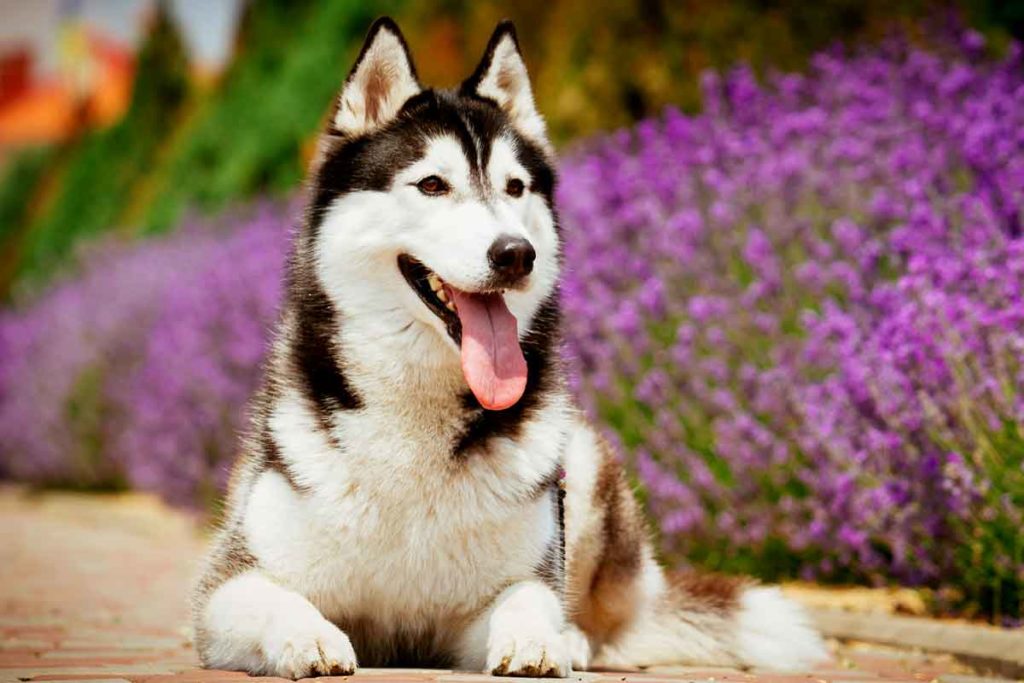Traditionally bred as sled dogs, Siberian Huskies are well known for their desire to run, love of cold weather, and social nature. They are incredibly clever pups and talented escape artists. If you are considering bringing a husky into your family, it is important to understand their unique personalities, potential health concerns, and grooming and exercise needs.
Table of contents
History
As their name suggests, the Siberian Husky’s ancestors were originally bred in the Siberia region of northeastern Asia by the seminomadic Chukchi people. According to the Encyclopedia Britannica, huskies were originally kept as family companion dogs and endurance sled dogs. Put simply, they are powerhouses—huskies can travel long distances at moderate speeds, carrying a light load in extremely low temperatures, all while expending a minimal amount of energy.
Siberian Huskies caught the eye of the public when they began winning sled races in the early 1900s. In 1910, the first team of huskies, driven by John “Iron Man” Johnson, won the 400-mile All Alaska Sweepstakes Race. According to AKC, huskies also served in the United States Army’s Arctic Search & Rescue Unit of the Air Transport Command during World War II.
The breed really shot to global stardom, however, in 1925, when legendary musher Leonhard Seppala led a relay of Siberian Huskies 658 miles in only five and a half days. The team delivered lifesaving medicine to Nome, Alaska, where an epidemic of diphtheria had broken out. Balto, who was Seppala’s lead dog on the final leg of the “serum run,” remains one of the most honored hero dogs in canine history. A statue of Balto stands in New York City’s Central Park.
Siberian husky size
Siberian Huskies are considered medium-sized dogs. They are generally smaller and lighter than their burly arctic cousin, the Alaskan Malamute.
- Male Siberian Huskies typically stand about 21 to 24 inches tall and weigh between 45 and 60 pounds.
- Females are slightly smaller, about 20 to 22 inches tall and between 35 to 50 pounds in weight.
Appearance
These graceful dogs are known for their powerful, effortless gait and beautiful eyes. Husky eyes can be light brown or light blue, or sometimes one of each. They have erect ears and a thick double coat that keeps them warm in the coldest temperatures.
Siberian Huskies’ dense, soft coat can be gray, tan, or black and white. They may have markings the resemble a cap, mask, or spectacles. These dogs are most comfortable in cold weather and can easily overheat in hot conditions, warns the Pet Health Network. Husky owners are likely familiar with their dogs refusing to come inside from playing or even just laying down in the snow.
Grooming
Siberian Huskies are known to be naturally clean animals and generally free of that trademark doggy odor. Their self-cleaning habits mean that they often need only a few baths per year, notes Rover.
Weekly brushings help keep the coat and skin in good condition. Siberians have a double coat with an undercoat and guard hair. While they shed year-round, their undercoat sheds significantly in the spring and fall. Huskies typically require weekly brushing and more frequently during shedding season, which will help minimize the mess.
Activity levels

These working dogs are very energetic and have great endurance. Huskies need at least one to two hours of exercise each day, and thrive when they have a job to perform, especially anything that involves pulling and running.
Siberians were bred to run and will do so at every opportunity. It is extremely important to keep huskies on a leash, in harness, or in a fenced yard at all times. This desire to bolt makes them clever escape artists—they are known to dig their way out of backyards and even learn how to use doorknobs! Without enough exercise, Siberian Huskies can become destructive.
Huskies tend to have a strong predatory drive. While they get along wonderfully with people and other dogs, the Smart Canine warns that they may chase after smaller animals, including cats. This love of chasing can be a dangerous combination with huskies’ urge to run. They are also not great swimmers or retrievers. Make sure your Siberian Husky is microchipped and has an ID tag on their collar at all times. Should they escape, having proper identification will help ensure your pup is returned to you safely.
Husky health
Siberian Huskies are a relatively healthy breed with an average lifespan of about 12 to 14 years. The Siberian Husky Club of America notes that responsible breeders screen for common joint and vision issues in huskies:
- Hips – Siberian Huskies often suffer from hip dysplasia. This can be an unfortunate diagnosis for dogs who love nothing more than to run. Mild cases usually result in arthritis, while more severe cases may require surgery.
- Eyes – Juvenile cataracts, corneal dystrophy, and progressive retinal atrophy are all common in huskies.
Personality
Traditionally bred as pack dogs, Siberian Huskies are very social. They enjoy family life, get on well with other dogs, and are even friendly with strangers. If you are looking for a guard dog, huskies are not your best bet—they are more likely to roll over for a belly rub from an intruder. Huskies are also not well suited to staying home alone all day.
The nomadic background of the breed typically results in Siberian Huskies being very adaptable. Owners of huskies often report their dogs having no trouble adjusting to new living arrangements, activities, or schedules. Huskies can be great go-with-the-flow dogs in this way, according to AKC.
Huskies do not tend to bark much, but they are far from quiet. They often vocalize with a wide variety of “woos,” chirps, and howls. These dogs are incredibly intelligent and independent. They are gentle and playful, often exhibiting some mischievous behavior. Huskies are full of personality—they will keep you on your toes and be a loving companion.
Training
Huskies are a wonderful combination of intelligence and independence. This means, however, that they can be difficult to train. Huskies learn quickly and easily understand what you expect, but their strong will can lead them to ignore you in favor of doing whatever they want. Training huskies requires consistency, dedication, and patience, but because they are so smart, your efforts can really pay off. The best approach is to make all training exercises fun for both you and your pup.
Bottom line on Siberian huskies
Overall, Siberian Huskies are wonderful family dogs full of energy and personality. Owners should give their huskies plenty of opportunities to burn their energy by running, but be sure to keep them secure and properly identified, as these dogs are prone to bolting out the door. These dogs are intelligent and independent with a mischievous streak, and love spending time with their people.









